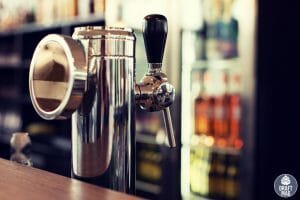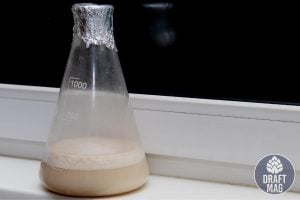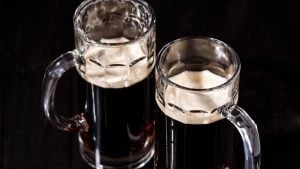PBW vs Oxiclean: Comparison of Cleaning Brewing Equipment
PBW vs Oxiclean is usually the main comparison while there are different products for cleaning brewing equipment. These are two industry leaders with their own pros and cons, and as a homebrewer, it might be difficult to choose which chemical agent you should choose. Both PBW and Oxiclean are quality homebrewing cleaning products for taking care of your equipment after brewing and ensuring your beers are safe. When considering the one to choose, we’ve compiled a comparison review of the two products.

PBW vs Oxiclean Comparison Table
| Features | PBW | Oxiclean |
| Type of Cleaner | It is specially formulated for brewing equipment. | It is a percarbonate cleaner. |
| Formula | It is made with sodium metasilicate. | It does not include sodium metasilicate. |
| Affordability | It is expensive. | It is affordable. |
What Is the Difference Between PBW and Oxiclean?
The main difference between PBW and Oxiclean is the ingredients, as PBW contains sodium metasilicate while Oxiclean does not. But cleaning chemicals have the same ingredients aside from this. The PBW is specially formulated to clean brewing equipment, while Oxiclean is a general cleaning agent.
What Is PBW Best For?
PBW stands for Powdered Brewery Wash and is a patented alkali cleaner that was first developed for Coors brewing company. It is used in commercial breweries and by homebrewers to clean their fermenters, tanks, kegs, and other equipment. It was created by Five Star Chemicals.
– Cleaning Process
If you’re cleaning your brewing equipment, PBW is a better choice than other cleaning solutions. PBW was specifically made to meet the needs of the beverage industry because it has sodium metasilicate, a chemical that is useful in cleaning organic matter. This is highly important due to all the dirt left on the equipment after brewing.
The beer trub is usually stubborn to clean out of your fermentation vessel, but having the chemical will go a long way. The wort and hop residue accumulated in brew kettles are not easy to remove unless they are with PBW.
Although PBW is ideal for cleaning your brewing equipment, it is more expensive than other solutions, and the reason why is simply because it gets the job done in a perfect way. Despite this, you can expect it to last for a longer time since you only need a small amount at a time during cleaning.
Furthermore, you can use PBW on aluminum and stainless steel brew kettles without corroding them. This is because PBW contains a chelating agent so even when using hard water, there will be no damage to your equipment. Nonetheless, this will keep your tools for the brewery last longer and it will be cost-effective throughout the journey of brewing.
– Environmental Friendly
Five Star Chemicals has been servicing breweries, distilleries, wineries, and other related businesses since 1980. The company describes PBW as a ‘non-caustic, non-corrosive, environmentally and worker-friendly, safe to use, an alkaline cleaner that has been found to outperform other caustic-based cleaners.
PBW is in powder form and is highly effective in removing thick and caked organic soils and leftovers in your equipment. It is pretty easy to use, too, with no scrubbing required. Simply soak the equipment in the solution and rinse it the next morning. With PBW, you should use one to two ounces per gallon for kettles and three-quarters ounces per gallon for other equipment.
Being environmentally friendly, this solution will not damage the equipment of the brewing process, and the acids will not harm them or spoil the steel of the tools.
– Cleaning Performance
This product is a highly effective cleaning agent for taking care of your brewing equipment. It does not leave any residue behind after rinsing, and it won’t cause hard water scaling, too, so you can use any kind of water you want. The cleaning chemical is environmentally friendly and also user-friendly.
You can use PBW to clean aluminum and stainless-steel brew kettles too. Since the cleaning agent does not contain any fragrance or dye, it will not add any off-flavors to the beer that you brew after cleaning. You should follow the instructions when brewing to get the best results.
For cleaning brewing equipment, this one is highly effective and provides top performance. It contains more alkaline than others due to its formula and ingredients. PBW contains a surfactant that will lower the surface tension of a liquid and make water wetter. This helps the detergent effectively remove soil from the surface of the equipment.
Also, the sodium percarbonate in it is makes it highly effective in getting rid of the build-up of grime, oils, and scales in your brewing equipment. Caked-on organic deposits can easily remove when you soak the equipment overnight. It can be used for brew kettles, conditioning tanks, fermenters, filters, and all packaging.
– Ingredients
There are different ingredients that you can find in PBW, which are focused on thoroughly cleaning your brewing equipment without damaging it. Keep in mind that aside from the sodium metasilicate, the ingredients in it are the same as other cleaning solutions. However, it is this sodium metasilicate that makes it a better choice for equipment than others, because of sodium metasilicate for removing organic matter effectively.
On the other hand, sodium carbonate is an alkaline salt that is mostly found in detergents and cleansers, and sodium carbonate peroxide bleaches and oxidizes surfaces when used with water, these are the key ingredients that make it different than others.
Polypropylene glycol is a wetting agent that makes cleaning easier, as it makes lubrication easier. Tetrasodium iminodisuccinate is a plant-derived rinsing aid and water softener that makes it ideal for cleaning with hard water.
Trisodium carboxymethyl alanine is a stabilizing agent mostly found in detergents. Sodium lauryl sulfate is a cleansing and foaming agent mostly found in shampoo. Sodium hydroxide neutralizes acids while cleaning, and it is frequently used in bleaches and cleaners. lastly, dimethicone is a silicone-based smoothing agent, and this is the key ingredient that won’t make the products roughen up by heavy chemicals, basically, it is a helping agent.
Five Star is transparent about its ingredients list, so you can find it on the official website. All these ingredients are intentionally put together for cleaning brewing equipment.
– Advantages
There are many advantages to keep in mind if you decide to use this solution, as it was specifically made as a cleaning agent. PBW is a very effective cleaner for homebrewing equipment. It does not cause hard water scaling on equipment and can be used with any kind of water when cleaning.
It is biodegradable and environmentally friendly. It can be used in cleaning aluminum pots and equipment without darkening it or oxidizing it. It can be used for other household cleanings, like your washing machine or dishwasher. It can effectively remove caked organic matter on equipment, including residue from hops and wort.
PBW will sanitize your brewing equipment which prevents organisms from getting into your wort and ruining your beer. This solution does cleaning and sanitizing pretty easily, although it requires rinsing afterward.
For your brew kettle, you should use PBW at temperatures from 140 to 160 degrees Fahrenheit. Then for other equipment like fermenters, hoses, bottles, and kegs, you will use temperatures from 100 to 120 degrees Fahrenheit.
– How to Clean
It is pretty easy to use PBW in cleaning your home brewing equipment. The equipment works by soaking your equipment overnight in PBW solution and then rinsing it the following morning. By doing it this way without scrubbing, you won’t damage your skin or the rubber gaskets and metals.
The temperature for using it should be from 100 to 160 degrees Fahrenheit. If you’re using it hot, you should soak it for four hours, but with cold water, soak it overnight. Then rinse it and use a no-rinse sanitizer. Keep in mind that PBW can work as a sanitizer too.
What Is Oxiclean Best For?
Oxiclean is best as a percarbonate cleaner that can also be used for cleaning brewing equipment. It is also a pretty old brand that dates back to the early 2000s. It is a commonly known American brand of household cleaners that was founded in 1997 that makes different household cleaners.
– Uses
The cleaning agent uses oxygen to clean out tough stains on equipment. This solution works by releasing sodium carbonate to bind organic or inorganic material. It is not the same as other cleaning tools, unlike what you might think, since it contains less alkaline and doesn’t have sodium metasilicate. Many homebrewers turn to this one as a suitable alternative to others but do not walk as well either way.
Due to this reason, it is less effective at getting rid of organic matter, regardless of how caked or stiff the residue is. The cleaning agent works by breaking down stains on any surface and emulsifying the oils used to make the stains lift up the surfaces.
This makes it effective in completely wiping off stains from your equipment. It also prevents soils and stains from going back to your equipment while you clean. It can be used for a wide range of cleaning like other solutions. Both cleaning products can be found in stores around you, including grocery, department, and online stores.
– For Brewing
You should use the fragrance-free Oxiclean for cleaning your brewing equipment. It is cheap and effective and can even be used to remove labels from beer bottles. But you want to avoid getting off flavors in your beer, which is why the Free version is advisable.
It is a safe and eco-friendly cleaning solution for taking care of your brewing equipment, but it does not offer a great cleaning performance, especially for brewing kits. Despite working to clean all kinds of equipment, surfaces, and even laundry, it is less effective in cleaning brewing equipment than other brand products.
This one comes in two types, including fragranced and fragrance-free products. You should go for the fragrance-free version to prevent off-flavors from getting into your beer. In addition, Oxiclean does not take care of hard water scaling, so you should avoid using hard water for cleaning your equipment.
Keep in mind that this solution is affordable, so most homebrewers opt for this agent as a cheap alternative to other solutions. To enhance the effectiveness of this solution, most homebrewers say that you should combine 70 percent of it with 30 percent of TSP/90. The TSP/90 ads the sodium metasilicate.
Overall, this shows that you can get the performance with this solution. Aside from your homebrewing equipment, you can also use this solution to clean carpets and upholstery, treat tough stains, remove pet stains and odor, and eliminate organic stains like mold and mildew. Aside from the 70-30 formula mentioned above, follow the steps on the packaging.
– Ingredients
Oxiclean isn’t required to disclose its ingredients, so it is not sure what makes up the cleaning agent. It is a trade secret. Despite this, it has most of the same ingredients as other solutions, aside from sodium metasilicate. The formula used for making it probably contains dyes and fragrances, but there is a free version that doesn’t have this.
Oxiclean states that its main ingredients are sodium carbonate, sodium percarbonate, surfactants, and polymer. The surfactants are detergents; it is ion-neutral and low-sudsing, so it easily wipes off the dirt on your equipment after the other ingredients make them loose.
The polymer in the solution takes care of the grease on your equipment too, and when you mix water with the cleaning chemical, it activates the sodium percarbonate. This covers all the surfaces of your equipment and keeps it clean, although you should be careful if you have aluminum or stainless-steel surfaces.
The ingredients, however, make it an oxygen-based, water-activated cleaning formula that can get rid of dirt and persistent stains on any surface. It does not have any dyes or perfumes as long as you choose the product with the tag FREE on it. This prevents any form of off-flavors in your beer.
– Advantages
Although others do have been specifically made for brewing, there are different reasons why homebrewers will choose this one instead.
Oxiclean is significantly less expensive to use in cleaning surfaces than PBW. It is biodegradable and friendly to the environment, it is widely available, so you can easily purchase it. It can be used for different things in your home, including laundry and cleaning surfaces. So, you get an all-in-one cleaning product. It is easy to use for cleaning your homebrewing equipment.
Oxiclean remains active for six hours, so if you’re soaking your homebrewing equipment, you should keep this in mind as to how long you should soak it. Oxiclean works by breaking up the magnetic attraction of the dirt and stains on a surface and getting rid of them.
– Cleaning Surfaces
Although it is safe to use Oxiclean for taking care of your home brewing equipment and different surfaces, you should spot-check it first. Dampen the surface that you want to clean with Oxiclean, just a particular area, and check to see that there is no scaling or corrosion.
The basic measurement for cleaning with it is about two tablespoons of detergent for a six-gallon fermenter. You can consider mixing it with TSP/90 for more effective cleaning. After soaking the equipment, when using this solution, just ensure the water is warm as you rinse thoroughly afterward.
You can also use this solution on wood, tile, and grout. However, it is key to remember that you must avoid mixing it with bleach or chlorine, at all costs because it would irritate your skin or even your eyes.
It is possible to use too much Oxiclean, so you should use it as directed in the instructions. The ideal measurement is up to four scoops per gallon of hot or warm water. Using too much Oxiclean can damage the color of your brewing equipment.
FAQ
– What Can I Use Instead of PBW?
Oxiclean is the most suitable alternative to PBW, so you should consider this if you’re looking for another option, especially one that is more affordable. The main ingredients in Oxiclean are very similar to PBW, too, including sodium carbonate and sodium percarbonate.
– How Do You Make DYI PBW Cleaner?
You can make a DIY version of PBW cleaner by combining Oxiclean with TSP/90. This gives you all the ingredients of the PBW, but with the missing one for getting rid of organic matter. Keep in mind that you’re measuring 70 percent Oxiclean with 30 percent TSP/90 by weight.
Conclusion
As seen in our PBW vs Oxiclean review, the two cleaning products have different similarities in terms of their ingredients. The main difference between the two of them is that PBW contains sodium metasilicate, which is effective for cleaning organic matter, while Oxiclean does not have. This organic matter includes the buildup of hop and wort residue.
If you’re a professional brewer and need a highly effective cleaning agent, you can opt for the PBW. On the other hand, Oxiclean is ideal for those who need an affordable and still effective option, even if it’s not as good at cleaning. Overall, consider your brewing needs before choosing one cleaning chemical.






